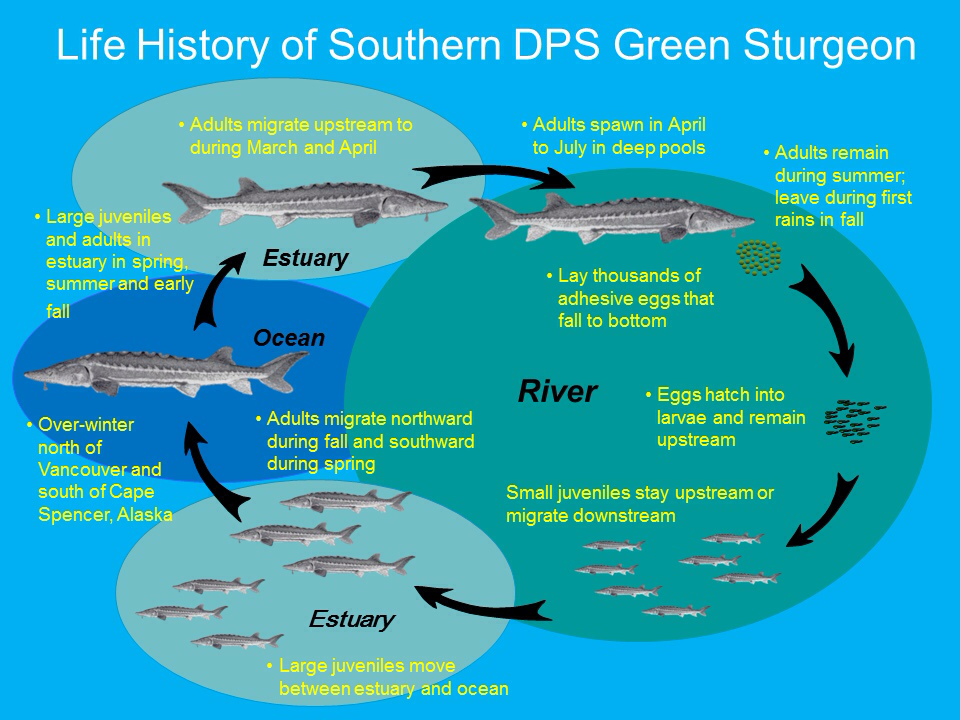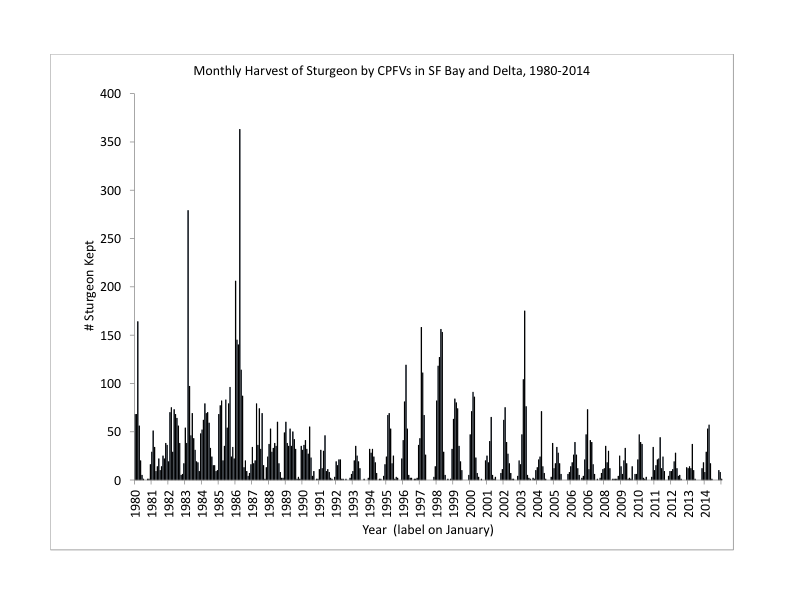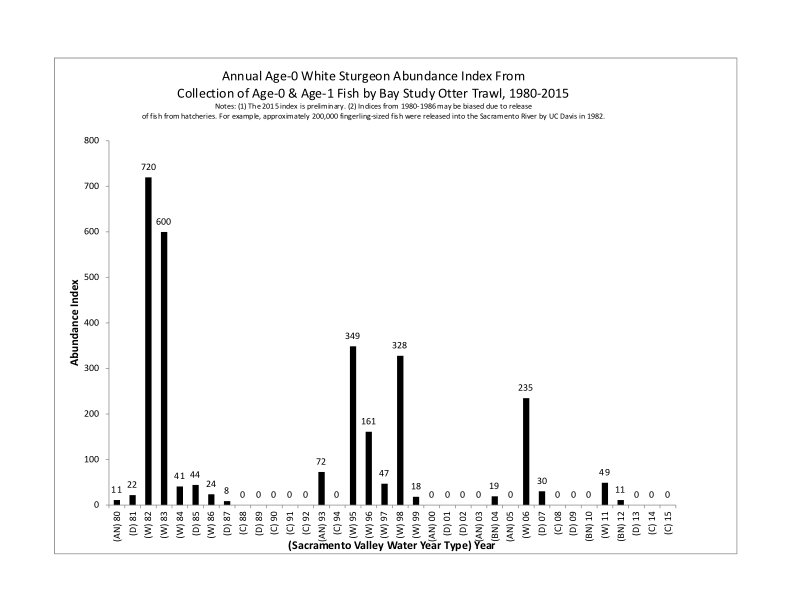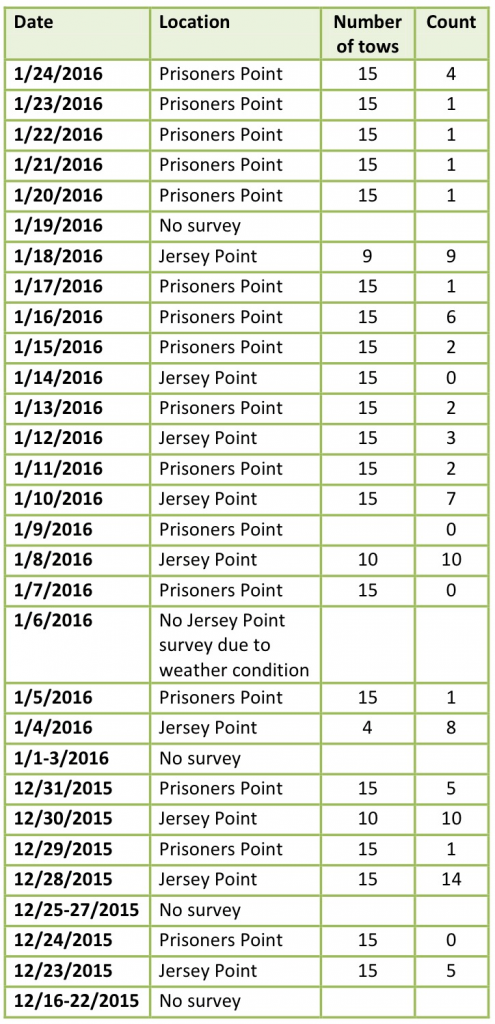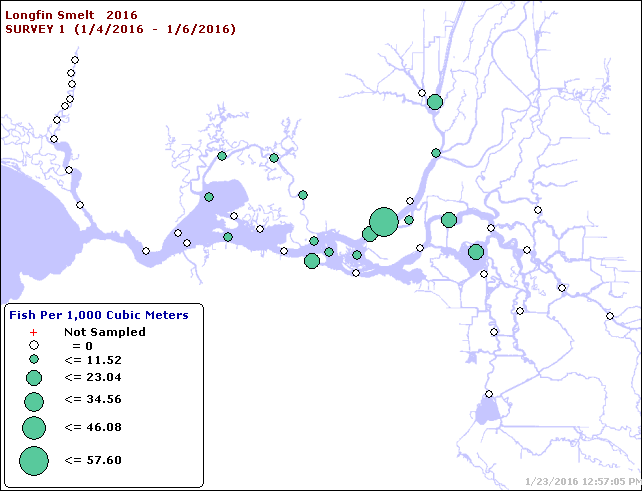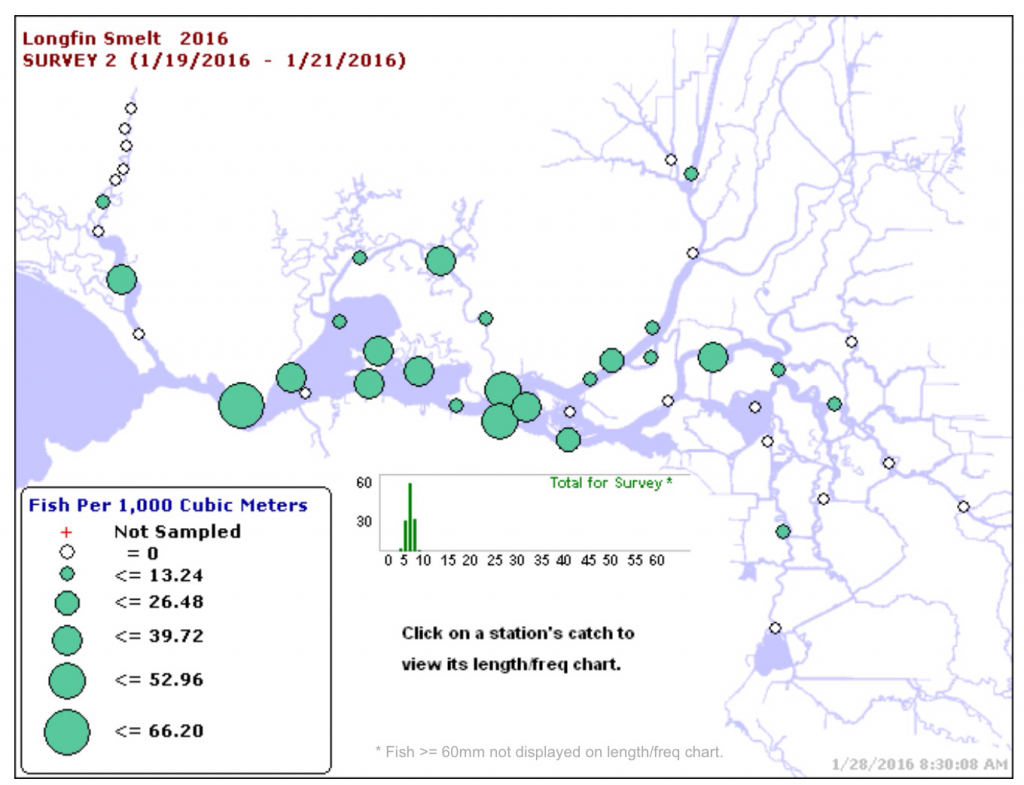This third week of February 2016 the Smelt Working Group concluded “the risk of entrainment remains high and it is incompatible with current pumping levels”1. Basically as Delta inflows decline after the early winter stormwater recedes in early February and South Delta exports increase, the risk to Delta Smelt is high with the onset of spawning imminent. Despite the high risk assessment, state and federal managers have decided to raise exports to the maximum allowed under the Delta Smelt Biological Opinion, to 6,000 cfs, which is triple the 2000 limit suggested by the working group, and about a third of Delta inflow. The working group warns the managers that just because there are few smelt being seen in Delta surveys does not mean that the remnants of the populations are not at risk.
The working group is also concerned with what may soon occur once smelt do start spawning. As Longfin Smelt have begun spawning, I have summarized recent data to specifically look at that risk. Figure 1 shows the recent early February Smelt Larval Survey results along with annotations of net flows. Under 6000 cfs exports negative upstream net flows occurs throughout the central Delta (red arrows). The larval smelt in this area will transport to the south Delta over time. With spawning smelt in this area, their offspring will also likely move south to the pumping plants.
With most of the larval Longfin in Suisun Bay because of the earlier storm flows, the risk to the population is low. Yet, these are a state endangered species with these export operations causing a measurable take. With Delta Smelt yet to spawn, they are more likely to be found further upstream because of lower Delta inflows, thus putting their larvae at greater risk than Longfin, especially given ripe adults are present in the central Delta.
One final note, with these operations and declining Delta inflow, the low salinity zone where smelt larvae concentrate will be drawn ever eastward from eastern Suisun Bay into the central Delta. This pattern will increase the risks to smelt. The upstream edge of the low salinity zone is moving upstream in the lower San Joaquin channel with the higher exports as seen at Antioch (Figure 2) and False River (Figure 3).
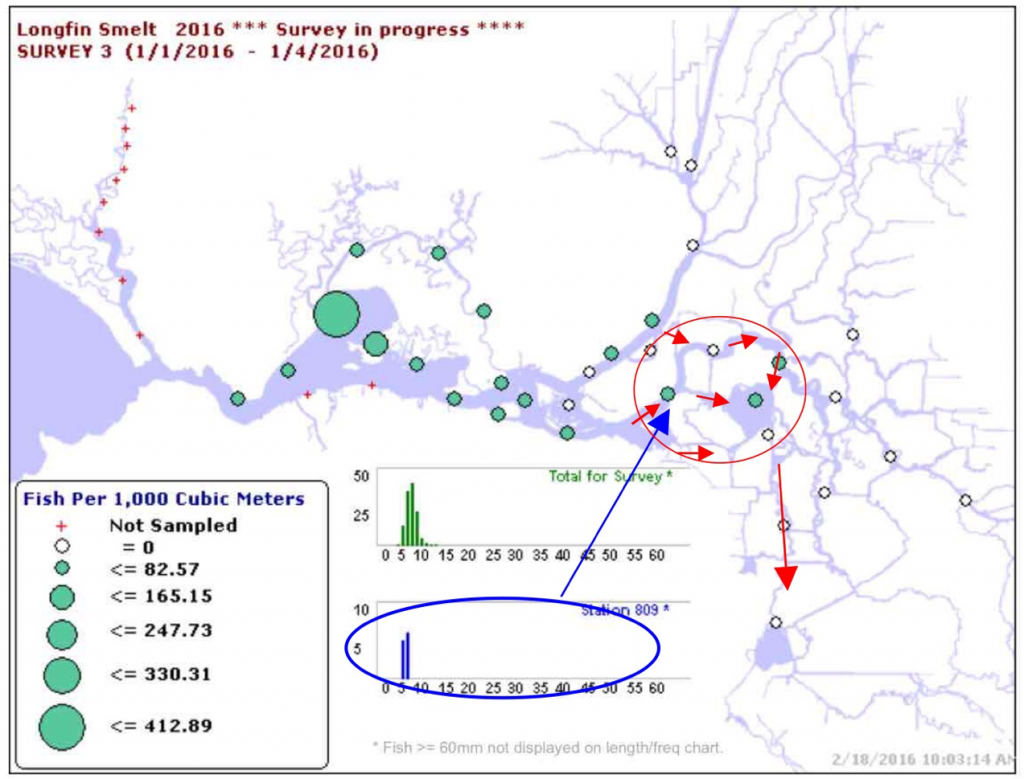
Figure 1. Early February Longfin Smelt densities from Larval Smelt Survey2 with added annotations of net flow in the Central Delta zone of influence (red circle) of the South Delta exports. Blue circle shows catch at Jersey Pt station (809). Red arrows depict net negative flows on the order of 400-5000 cfs3. (Note these early February Longfin larvae densities are by far the lowest observed in the eight years of surveys.)
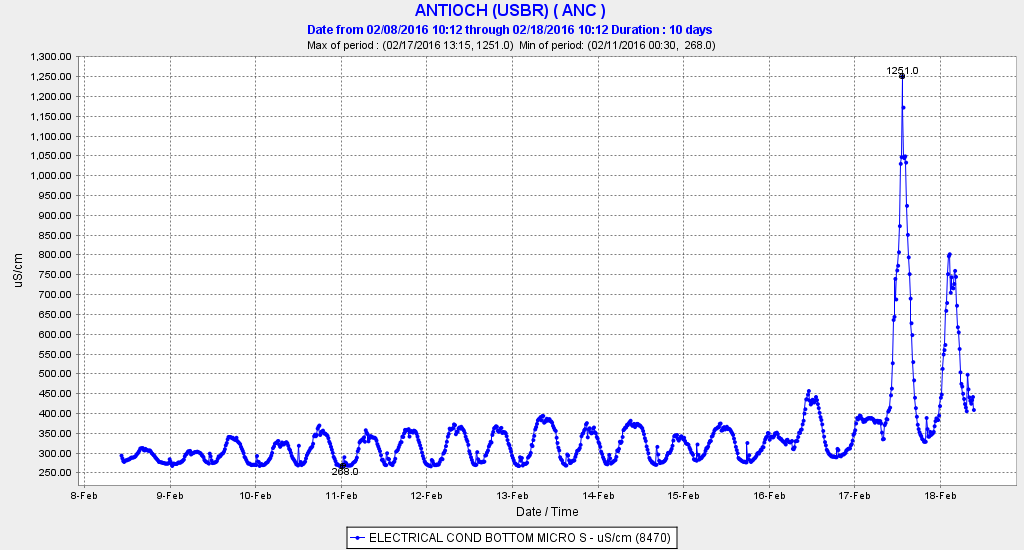
Figure 2. Salinity (EC) at Antioch in the San Joaquin channel of the west Delta during February 2016. (Source: CDEC)
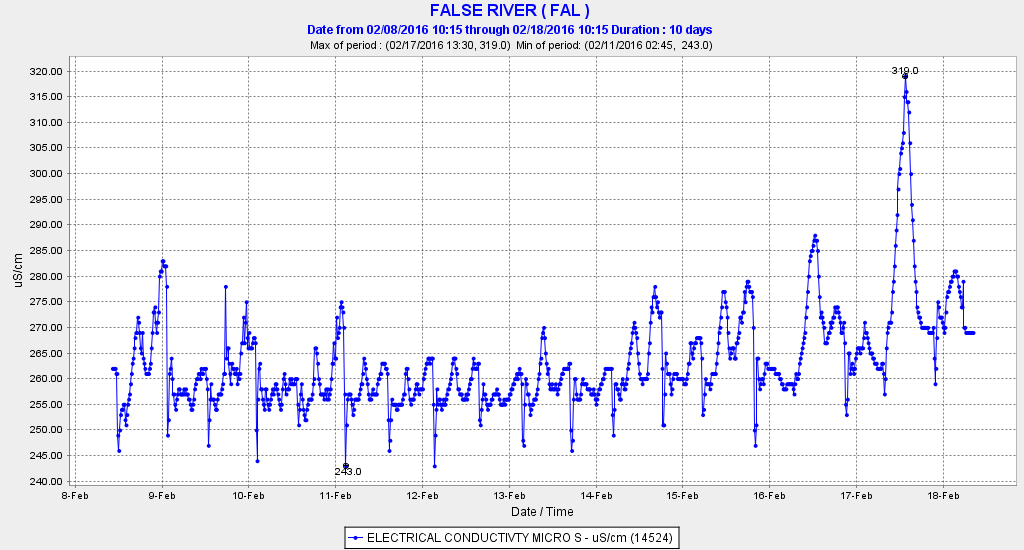
Figure 3. Salinity (EC) in False River in the central Delta during February 2016. (Source: CDEC)


